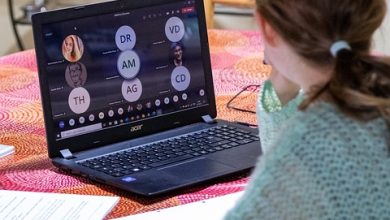Freelance Food Photography: Turning Your Passion into Profit

Food photography has become one of the most sought-after freelance careers, especially with the boom in digital media and the rise of food-focused content on social platforms. If you’re passionate about capturing the beauty of food and are looking to turn this interest into a profitable venture, freelance food photography might just be the career path for you. This guide will walk you through the essentials of becoming a successful freelance food photographer, from building your portfolio to landing clients.
1. Hone Your Food Photography Skills
Before diving into freelancing, it’s essential to master the art of food photography. Food photography differs from other types of photography because it relies heavily on lighting, composition, and styling to make food appear appetising and visually striking.
Key Food Photography Skills to Master:
- Lighting: Natural light often works best, but learning to work with artificial lighting can help you shoot at any time of day.
- Composition: Experiment with angles, textures, and props to create visually balanced images.
- Styling: Arrange food, utensils, and backgrounds in a way that complements the dish and conveys a story.
Practising regularly and experimenting with different techniques will help you develop a unique style that sets your work apart.
2. Invest in the Right Equipment
Professional equipment is an investment that can elevate your photography quality. However, starting out doesn’t necessarily mean buying the most expensive gear. As you begin, focus on essentials like a reliable camera, a quality lens, and lighting equipment.
Essential Gear for Food Photography:
- Camera: DSLR or mirrorless cameras with manual settings work well.
- Lens: A 50mm or 85mm lens for close-up shots and a macro lens for detail work.
- Tripod: Keeps your camera steady for sharper images.
- Lighting Equipment: Softbox lights or reflectors to control lighting in indoor setups.
3. Build a Strong Portfolio
A portfolio is your gateway to landing freelance clients. Start by creating a collection of your best food photography work that showcases your style, versatility, and skills. If you’re just beginning, consider doing test shoots or working with local cafes, restaurants, or food brands on a collaborative basis to build your portfolio.
Portfolio Tips:
- Showcase a variety of shots: flat lays, close-ups, and lifestyle images.
- Use high-resolution images that highlight texture and detail.
- Include personal projects or styled shoots to show creativity.
- Update your portfolio regularly to showcase your latest work and skills.
Consider creating both an online and printed portfolio. Platforms like Adobe Portfolio or Squarespace allow you to easily build a professional-looking website to showcase your work.
4. Define Your Niche and Style
Freelance food photography offers many niches, from editorial and commercial photography to social media content creation. Identifying a specific niche can help you tailor your portfolio and pitch to clients more effectively. Your niche could include areas like restaurant photography, cookbook imagery, food product branding, or social media food content.
Popular Niches in Food Photography:
- Editorial Photography: Perfect for magazines, cookbooks, and blogs, focusing on storytelling.
- Product Photography: Ideal for food brands needing high-quality images for packaging and ads.
- Social Media Content: Many brands seek photographers to create Instagram-ready images.
- Restaurant Photography: Captures menu items and atmosphere for use in promotional materials.
5. Set Up Your Pricing Structure
Determining your rates can be challenging, especially for new freelancers. When setting your prices, consider factors like time spent on the shoot, equipment, editing, and travel expenses. Research industry standards in your area to create a fair pricing structure, and consider offering packages for different types of clients.
Common Pricing Models:
- Hourly Rates: Charge by the hour, especially for shorter shoots or restaurant clients.
- Per Project Rates: Ideal for larger projects like cookbooks or campaigns.
- Day Rates: Many photographers charge by the day for extended shoots.
Pro Tip: Don’t undervalue your work; pricing yourself too low can harm your brand perception. Build confidence in your skill set and adjust your prices as your experience and demand grow.
6. Master the Art of Food Styling
In food photography, styling plays a major role in how appetising and visually appealing the dish looks. Food styling involves arranging food, props, and background elements in a way that enhances the image. This skill is particularly valuable when working with brands that want their products to look enticing.
Food Styling Tips:
- Use fresh ingredients and garnishes for a polished look.
- Create layers and textures by adding props like cutlery, napkins, or cutting boards.
- Keep the focus on the main subject; don’t overcrowd the frame with props.
- Experiment with colours and textures that complement the food.
7. Promote Your Work and Build a Client Base
Marketing yourself is key to growing as a freelance food photographer. Social media platforms, particularly Instagram and Pinterest, are ideal for showcasing your work and connecting with potential clients. Networking within the industry and joining photography communities can also open up new opportunities.
Promotion Tips:
- Use Instagram to share your work with relevant hashtags.
- Create a professional website with an easy-to-navigate portfolio.
- Network with food bloggers, influencers, and brands.
- Offer free content or collaborate with local businesses initially to build connections.
8. Learn Basic Editing and Post-Processing
Post-processing is essential in food photography. Editing helps you adjust colours, correct lighting, and sharpen details to make your images pop. Adobe Lightroom and Photoshop are popular editing tools for photographers, offering advanced features that allow for precise adjustments.
Editing Essentials:
- Adjust exposure, contrast, and sharpness for clearer images.
- Use selective adjustments to highlight textures and colours.
- Maintain consistency in your editing style to build a recognizable brand.
Consider learning advanced techniques like retouching or using presets to speed up your workflow.
9. Pitch Your Services to Potential Clients
Reaching out directly to potential clients is a proactive way to grow your freelance business. Research brands, restaurants, and publications that align with your niche and style. When pitching, showcase your best work, explain your services, and highlight the value you can bring to their brand through high-quality food photography.
Pitching Tips:
- Personalise each pitch to the client and their brand.
- Show examples of similar work to give them an idea of your capabilities.
- Follow up if you don’t receive a response initially—persistence can pay off.
10. Continue Learning and Stay Inspired
Freelance food photography is a dynamic field that changes with trends in food styling, photography techniques, and digital media. Stay inspired by following other photographers, exploring new techniques, and experimenting with different styles. Joining photography communities or taking online courses can keep your skills sharp and your approach fresh.
Inspiration Sources:
- Follow food photography accounts on Instagram and Pinterest.
- Experiment with new foods, recipes, and props to diversify your work.
- Take online photography and styling courses to expand your skills.
Conclusion
Freelance food photography is a rewarding career path that combines creativity, technical skills, and business acumen. By honing your skills, building a portfolio, marketing yourself effectively, and continuously learning, you can turn your passion for food photography into a profitable freelance business. Whether you’re shooting for magazines, brands, or social media, the possibilities in food photography are as endless as they are exciting. Embrace the journey, invest in your craft, and watch your passion for food and photography flourish into a thriving career!





